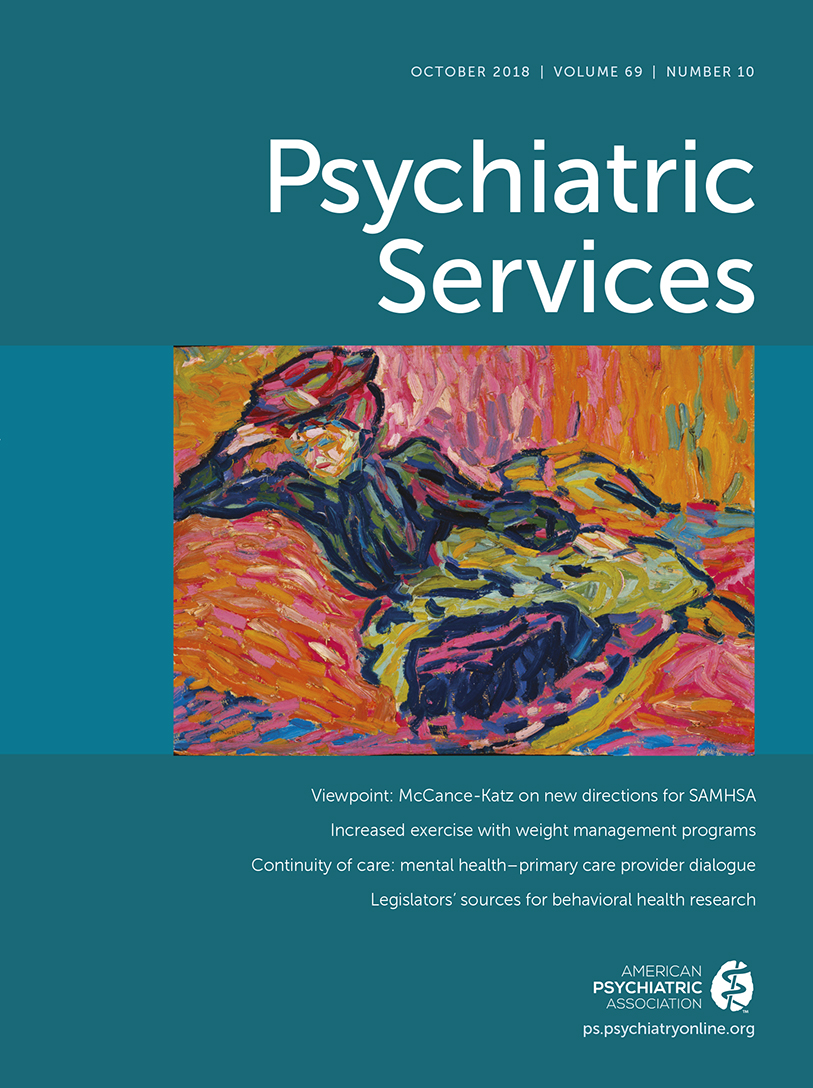Treating Patient Well-Being in a Psychiatric Emergency Room
Psychiatric emergency rooms are important points of access into the mental health care system, and visits offer opportunity to intervene and initiate robust mental health treatment. Therapeutic programming therefore should be provided as soon as possible to help reduce patient distress and improve well-being and overall satisfaction with care.
Within our Comprehensive Psychiatric Emergency Program (CPEP), we created and implemented the CPEP Well-Being Initiative (CWI). Located within a university hospital center in north Manhattan, our CPEP receives about 6,500 visits annually, and most individuals have a diagnosis of psychosis and co-occurring substance use disorders. Most patients stay in CPEP 16–24 hours, although it is licensed for 24- to 72-hour stays. Patients routinely receive a comprehensive psychiatric assessment, social work intervention, medication administration, and nursing care, as well as disposition planning. To enhance patients’ therapeutic experience, the CWI utilizes trained volunteers, usually undergraduate students, to provide a variety of support services for CPEP patients and their visitors. Volunteers receive training on various topics, including an introduction to psychiatric diagnoses, supportive techniques, verbal de-escalation, group facilitation, and an introduction to the principles of trauma-informed care.
CWI volunteers engage patients in many activities; however, one of their most important roles is to orient patients to the CPEP milieu and ensure that their basic needs have been met. Once they have been addressed, the CWI volunteers engage patients in recreational activities depending on patient and volunteer preference. These include coloring and drawing, poetry writing, clay sculpting, aromatherapy, solving puzzles, board and card games, listening to sounds or music, breathing exercises, viewing relaxing light projections, and dancing and movement. CWI volunteers are also encouraged to conduct wellness groups under the supervision of a CPEP staff psychiatrist, nurse, or social worker. Group topics have included sleep hygiene, medication management, calming techniques, controlling anxiety, mindfulness, movement and stretching, coping skills, and music and imagery. Volunteers also spend time talking and actively listening to patients as needed. When appropriate, patients’ visitors are invited to participate in CWI programming, activities, and groups.
CWI volunteers are also intended to improve overall CPEP safety by immediately reporting to staff any patient behaviors that are concerning as well as patient-disclosed information. Examples include new suicidal thoughts, reports of abuse, or worsening agitation or distress. Physicians, security personnel, and nurses help direct volunteers to patients whom they believe would benefit from specific activities, as well as alert volunteers to patients whom they believe may be too agitated or disorganized to safely participate in CWI programming.
Volunteers meet monthly as a group to debrief and process individual volunteer experiences, discuss program updates, and share best practices. Volunteers are also encouraged to take on leadership roles to support program operation and evaluation.
Volunteers created a comfort cart, with squeeze balls, modeling clay, coloring books, and magazines. One particularly popular activity on the cart is the aromatherapy. We obtained citrus- and lavender-scented aromatabs that patients can stick onto their gowns. A patient with comorbid bipolar disorder and substance use disorder who is well known to our CPEP entered one day, yelling loudly, and as the nurse started calling for the doctor, the patient yelled, “No, I don’t need medications! Get me the girl with the smelly stickers!” She was offered an aromatab and then walked to her stretcher quietly and was able to calm down without any further interventions.
We evaluated the views of a subset of patients, the CWI volunteers, and CPEP staff regarding CWI between February 2016 and May 2017. Of the 103 patients surveyed, we found that patients who interacted with CWI volunteers were highly satisfied with their CPEP stay, that the 21 CWI volunteers surveyed reported more comfort with psychiatric patients and greater familiarity with psychiatric concepts, and finally, that staff surveyed on 12 random days perceived the CWI services as beneficial and enjoyable for patients and as having a calming effect on the CPEP program.
One future direction of the CWI is to expand the volunteer base, including the recruitment of peers, to achieve a steady presence of volunteer-led programming in the CPEP. We hope our description of the success of the CWI will encourage others to replicate this model in their psychiatric emergency facilities.



